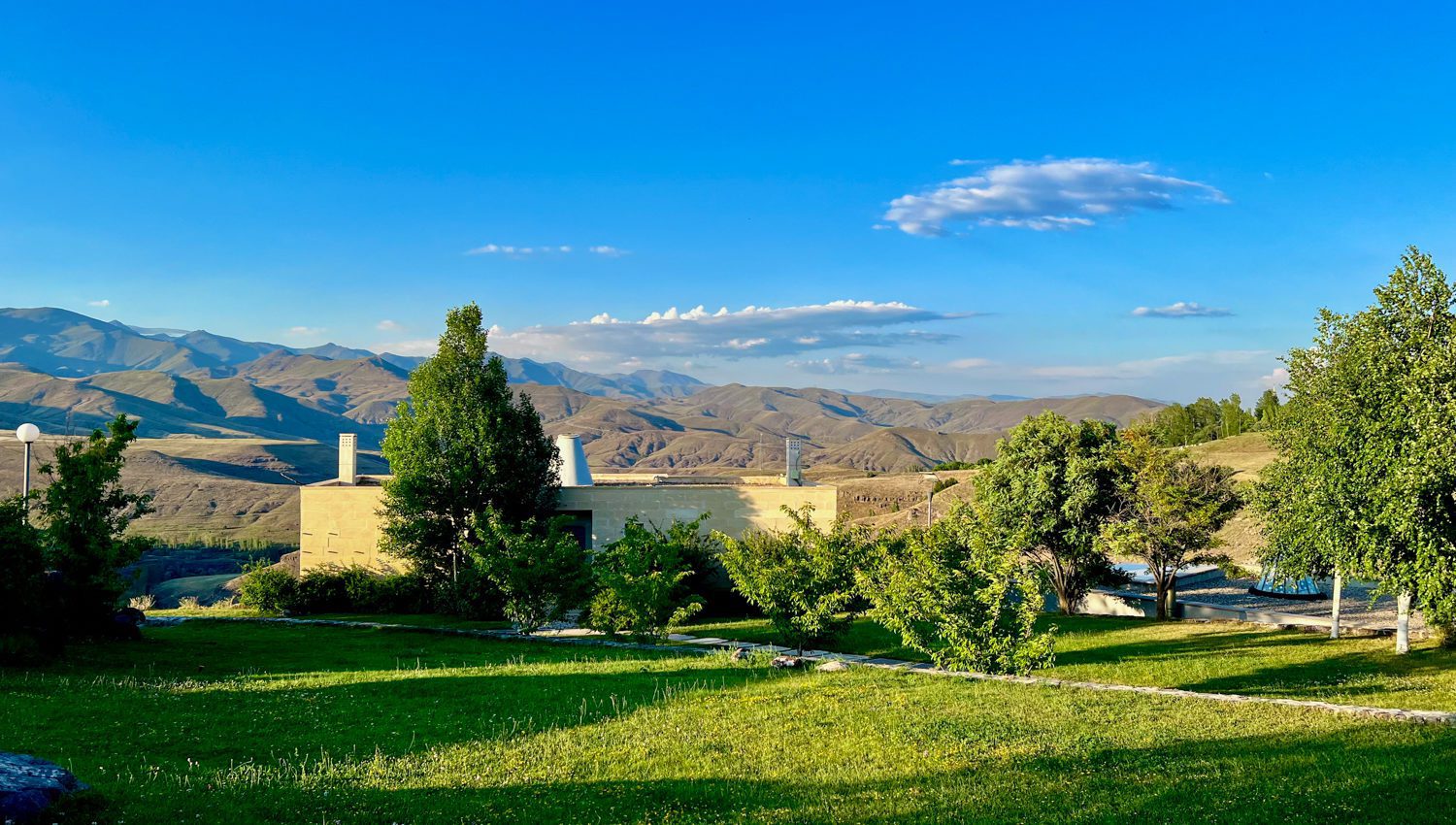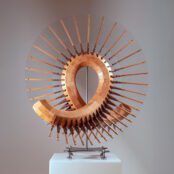Humans are curious about the world, and being an opinionated species have extended their discoveries, in an anthropocentric fashion, to represent that relationship as art, culture and spirituality. In Turkey an aspect of that relationship is emanet, a concept rooted in geography which combines trust, devotion, deep loyalty, and guardianship as a moral imperative – it speaks to the dependency between land and those that work it to live. With the list of global ecological crises lengthening some artists are considering this relationship as a form of social poetry. Symbolic frames that allow us to understand our responsibilities to the planet, both in terms of ecology and in terms of how we treat each other might be the key to ensuring our survival.
The Turkish artist Vuslat Sabanci approaches emanet, a concept of interconnection, through multi-medium assemblages, rotating sculptures, and kinetically driven pastel drawings. These syncretic creations are allusions to the vital processes that dictate human life – birth, death and transformation. But written in a close vernacular with details derived from personal and local sources. The artist herself has arrived at this language through years of activism around issues of domestic violence, as well as her ongoing project on deep listening – true communication which comes from awareness and knowledge. Opening the show in June 2023 at the Baksi Museum in Bayburt, Turkey, engaging with the area immediately around the museum was critical for her practice as she unearthed her roots in the area. In itself, an extension of her study of empathetic coexistence.
In order to create her version of emanet, Vuslat spent time in Baksi, walking the rolling steppe, following streams to the local village, and getting to know the conservative populace who work and pray in the confines of a relatively remote life. As an artist from the cosmopolitan worlds of Istanbul and New York, finding ground with the caretakers of this ancient land meant finding universal themes to communicate across the cultural and social divisions. Whether a farmer or an artist at some stage an acceptance of natural processes become sedimentary layers in the struggle for existence, built upon differently as culture and strategy, but related at their cores. To the outsider, Baksi is not hospitable, the ground is dry, the air parched, vegetation clings to small streams and rivers, veins of green through rock, sky, and dust. Conditions which become symbolic themes for the people who live there – in easier times and those of mortal desperation.
To reach Baksi, we left Istanbul by plane arriving at Trabzon then travelling onward by bus. For several hours we coasted along remote highways, village after village underlined in history’s pages and modernised by development schemes. Tall cosmopolitan blocks, clean, square and nestled in hopefully troughs below the endless sky. Driving through the remote areas of north east Turkey the vast grasslands are punctuated by quiet small towns. Slow men walked the streets and from the generalised view given en route life in the Bayburt district has the regularity of small towns everywhere.
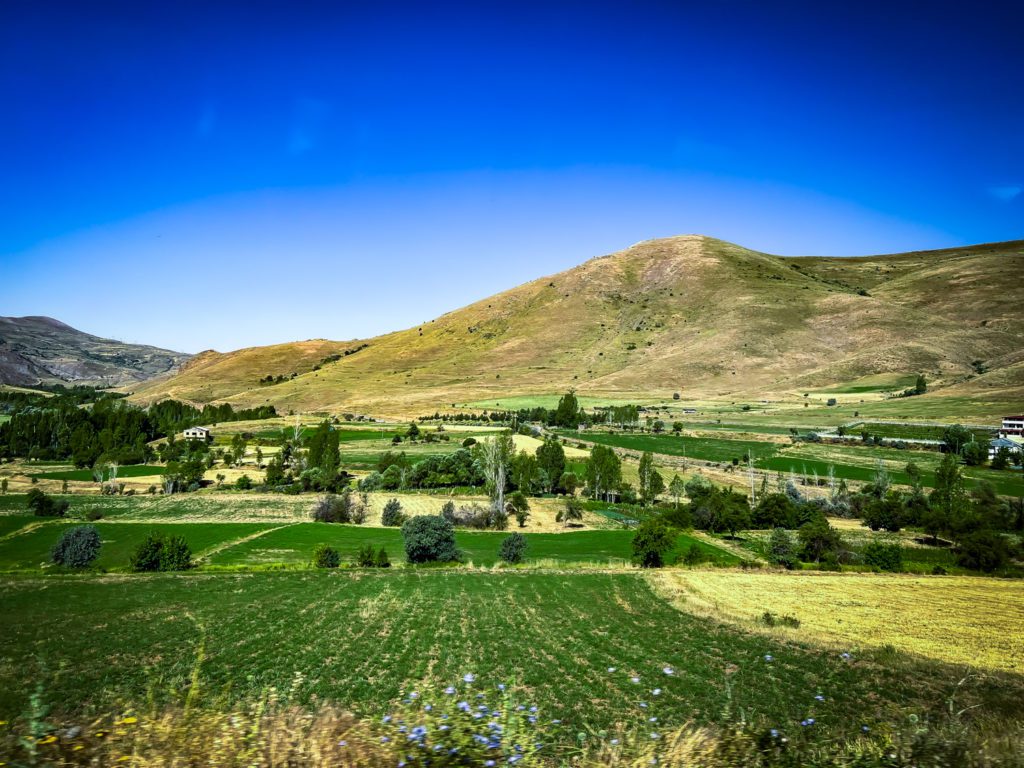
Long stretches of arid farmland stretched the hours before we climbed low rolling hills and then down through Bayraktar, the local hamlet formerly known as Baksi, from which the museum takes its name. Weaving through tight streets, we passed neat square houses clad in sun bleached planks, dusty hatchbacks tucked into alcoves, and the casual forbearance of people waiting to get on with their livestock. With a sharp turn we pulled out of the valley, up onto a dirt road ascending into the pale blue frame of the windscreen, before evening up to reveal a rocky moonscape road that led us towards the green oasis of the museum. Radiant white curves, graceful trees bending in the breeze, wide views of the ancient landscape; a monument to art and optimism sure, but is it more than just a peacock in the land of the plough?
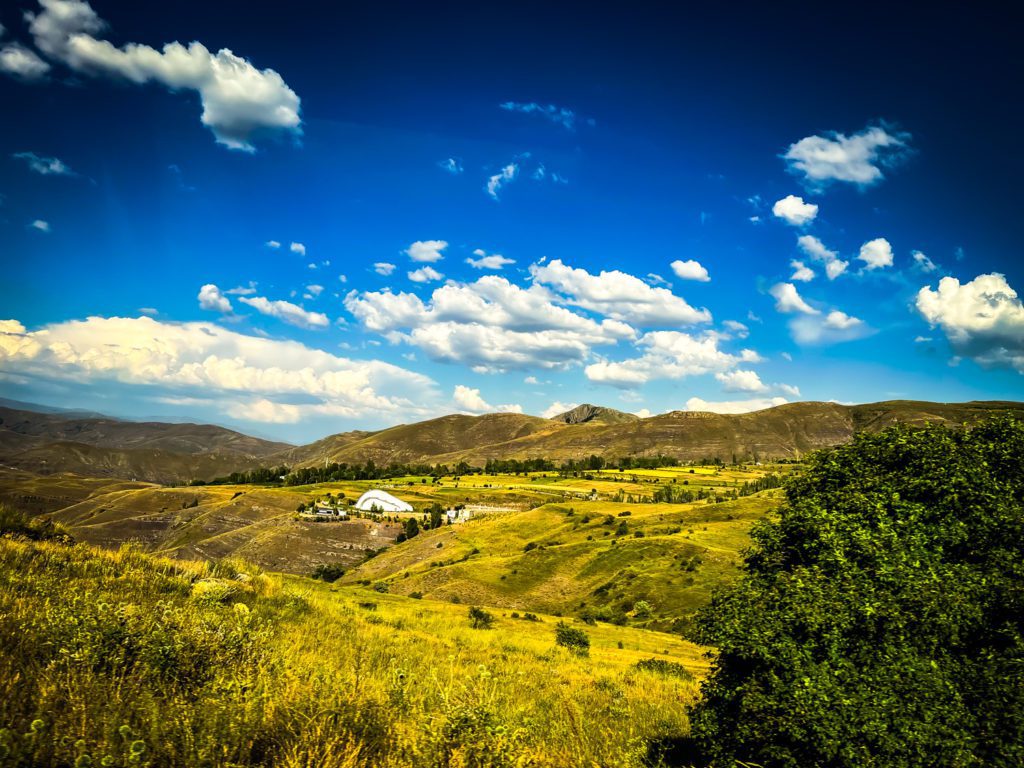
Built along international architectural lines the beauty and setting of the complex is sublime. The Museum was constructed by Bayburt-born artist and academy Professor. Dr. Hüsamettin Koçan in 2000 who conceived Baksi (a name meaning ‘helper, healer, protector’) as a social project as much as an art endeavour, and he wants to make Bayburt ‘a joy to live’. Along with contemporary exhibitions the museum has a vision to celebrate local art and crafts, teach people about the cultural history of the area, provide jobs and education for locals and long term seeks to expand its activities to develop the area in harmony with local will.
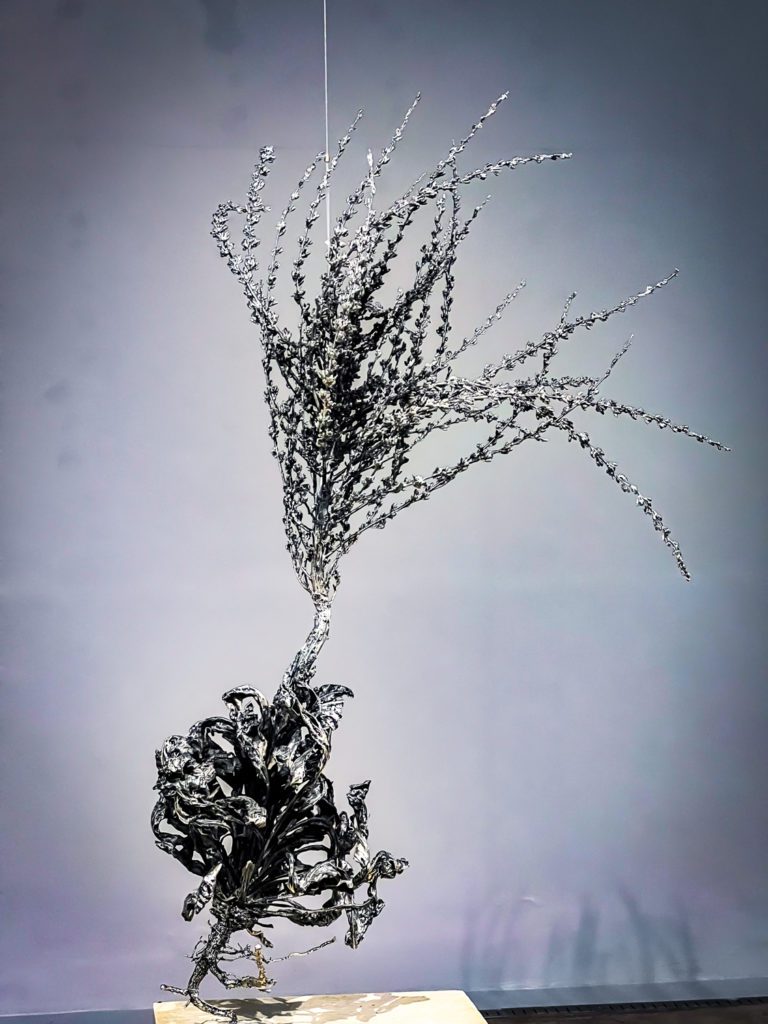
The award winning gallery (European Museum of the Year 2014) has staged a number of exhibitions and drawing from Koçan’s acumen regarding contemporary art has regularly found artists at important peaks of their practice. The most recent example of this is the artist Vuslat. While a relative newcomer, Vuslat’s shows at Pi Artworks London (2022) and presence at Monaco’s art week show a noteworthy maturity of practice and control of material that suggests a promising trajectory, one informed by immersing herself in the material and finding a thread to follow;
“[For me] intuition is a huge component of my process. I love to take things as a signal, a sign and really listen to what it’s saying. And that’s a beautiful creative process, because you can never plan what the outcomes are going to be. It’s a surprise for me as well.
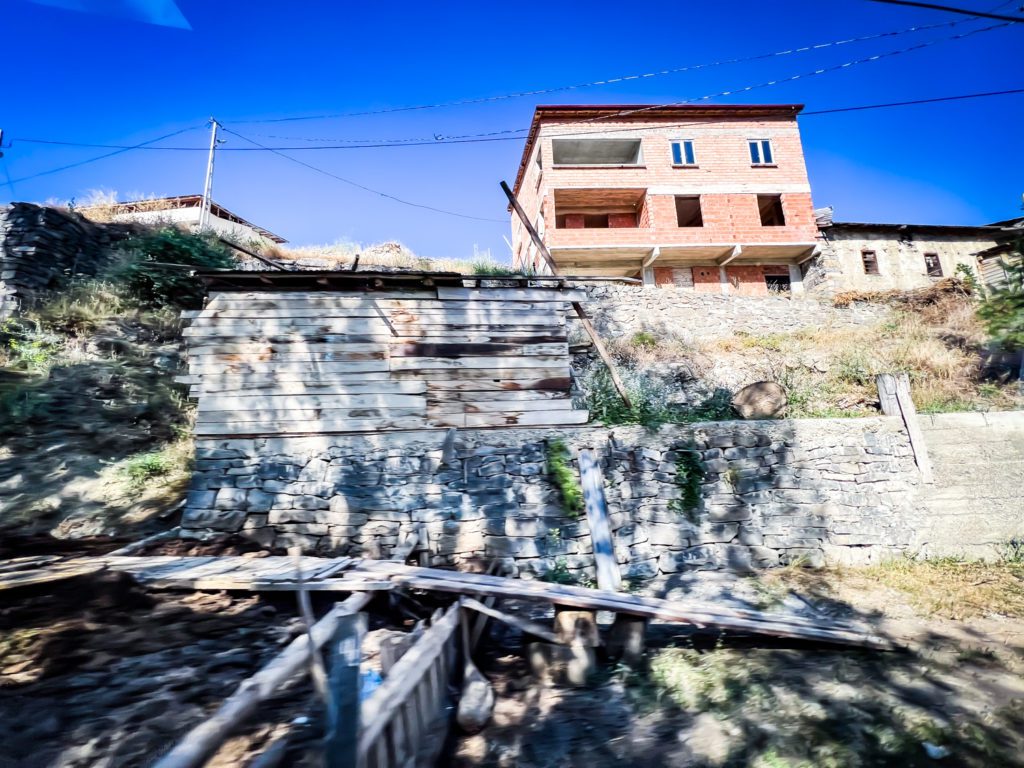
With clay, after my exhibition in London, which was marble. I found I wanted to explore further, so what’s next? Clay was talking to me. I don’t know why but clay has always been in my process, because I always find form in clay. Clay is where I search for forms – even if I do it with marble afterwards. That’s where I search for forms, because you have to converse with the clay. That’s why I love it, and it goes back to intuition, to the surprises in the process.






During my first trip to Baksi there were so many things that I was curious about. I know about this place through my parents who I grew up listening to but you know you often have to leave everything you know about a place to actually get to know it. Just take your heart and see what speaks to you. The first thing that spoke to me was the river. I came here, and sat here until morning, and it was the river. That Umbilical Cord of Life (Chain sculptural work) has the movement of the river, that’s what you’re seeing.
As for materials I didn’t use the local clay of this region, I worked with a clay that I have been working with for a long time. I used a material that I trusted, because this was the first time I was going to attempt such a bigger work. So I wanted to go with the one that I knew how to fire, that I knew how long it takes to dry and so forth. But the stones and rocks that I picked up from the region were found in a very intuitive way. As I drove around the region I found things that were interesting. I stopped, I listened and I picked them up. Sometimes, I put a little bit of earth in my bag or whatever but then I’d come back and look for related things. So, it really was a process of stop, listen, search and then see what speaks to you, to your heart.”
Vuslat’s emanet work has an exaggerated intuitive sense of scale, things that have a sense of being small are often huge and vice versa. This de/re-territorialisation of elements is a fairly common practice in art but perhaps less so within a localised cultural narrative. In the central gallery space of Baksi a giant gold chain descends from a circular opening (Yasamin Gobeck Bagi/Umbilical Cord Of Life, 2023), each link symbolising the ties of family, maternal connections, and the ties between our lives and that which gives us life: water, earth, toil and reward. It’s a compelling work, suspended spirals of chain reaching the floor with an easy arc belying the weight carried by its symbolic forbear, the gold chain given to Sabanci by her grandmother. Despite the familial sense within the work, the imparted sense is meditative rather than celebratory, these connections have their own set expectations. Rather than Western premise of individual liberation through generational life, the weight and burden of this chain, rather contains links of collective responsibility passed down from an unfathomable height.

The idea of suspension is a practical motif that replays itself in several of Vuslat’s works. In the series Orada Benimle Bulusur Musun/A Place We Meet (2023) silver coated native Mullein (Verbascum densiflorum) plants suspended over plinths have an ethereal funeral tone. The native plant, also known as Aaron’s Rod (a biblical wand of vitality), has a number of traditional medicinal uses to alleviate lung complaints and is said to grow for 2000 years. A hardy plant, it’s considered a weed in most places due to the large number of long lasting seeds it produces. As such it tends to keep propagating even after the parents are removed, it perseveres. Qualities drawn out in the work connecting the ancestral struggle for life with a sense of the eternal. The silver (a locally mined metal) coated roots don’t touch the surface of the plinth so we get to see the plant without the boundary of air and earth, root vs trunk etc. So we have an unlimited version of this gnarly, conventionally unattractive plant, drawn into ritual context by the gold and silver gilding. An emphasis that speaks to deep, simple, lived experiences of the physical world rather than existential voyeurs redolent of a gallery setting.
Vuslat’s works have an aesthetic simplicity and create huge chasms where the viewer can find a number of personal and historical connections, however the immediacy of the natural themes is what she speaks about. While there are formal nods to art history her works operate by feeding a local idea of eternal nature, a manifestation both mysterious and sensual.
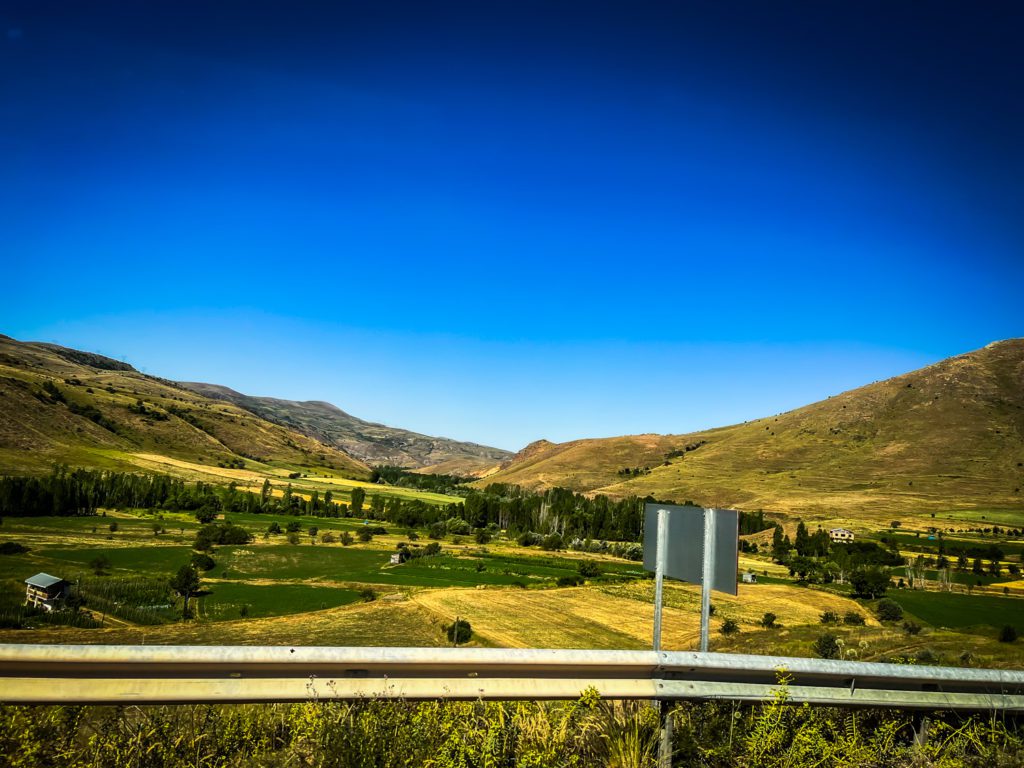
“How we live with nature is important. It’s actually very sad to see what’s happening. I listened to the river when I came here and got inspired. But I see the same river flowing towards the city and I see the dirty things thrown in the river. Plastic things. So it’s giving me hope that what I’m trying to create will have some impact on that. I’m grateful that I made this exhibition here because I hope that the people who throw things in the rivers will be able to come in to visit and ask questions themselves. I don’t know if they will be able to understand but these are the messages. I’m trying because we have to really listen and be aware, otherwise there is no hope. We’re just ruining it. We’re not taking it as an emanet as we should. In a way, it’s discouraging to see that the only way that I can keep moving is to produce and to see that we bring hope, and that we can make a change. And yes, be aware.”
The materials that Vuslat uses are inspired by her experiences of the place, in their forms, textures they tell tactile stories. Stories which recount a sense of identity and responsibility, an emanet. As a Turkish artist the nature of being Turkish is a question asked in the face of modernity and a city vs. rural divide. The contrast between the hopes of art and the life of agricultural labour draws you in. Her work will be available to everyone via the book Art of Emanet (Distanz) but it’s the real experience that connects. The reality of lives and its proximity to mortality contested empowers work at Baksi. The world is epic and perhaps romantically you feel the role of art in society as more fundamental than we appreciate amongst the babble of hip cities. Presenting your work at Baksi requires a strong will, the surrounding countryside erases the ephemeral, and only works of a singular quality that have an inner life survive. A Place… is such a work being the strongest hook between the concept of emanet, personal inspiration, Turkey, and the connection between the land and its people. The land owns the people. An ecological point that we’re increasingly realising in the West and a message important for Turkey itself on the 100th anniversary of the establishment of the Turkish republic by Kemal Ataturk. The presence of the Baksi museum is a signal to the country of the sparkling possibilities that await in all regions of this magnificent country, especially those outside the glittering Istanbul. But it takes brave artists like Vuslat, to allow themselves to be open, vulnerable, enough to let the possibilities of a renewing idea of belonging to bloom.
Travel made possible by Niki Gifford

The aim of art is to represent not the outward appearance of things, but their inward significance. – Aristotle

